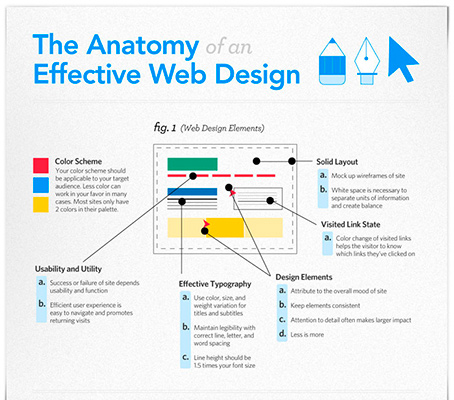The Development Of Site Design: From Past To Present
The Development Of Site Design: From Past To Present
Blog Article
Personnel Author-Abel Vangsgaard
In the past, sites were simple and focused on info. Navigating was straight, and style was for desktops. Currently, user experience is essential. Data overviews layouts for easy navigating. Receptive designs fit different devices. Today, dark setting lowers stress, and minimal menus improve navigating. Interactive attributes engage individuals, and vibrant visuals stand apart. AI combination enhances involvement. See how search engine optimisation marketing has actually advanced to enhance your online trip.
Very Early Days of Website Design
In the early days of web design, simplicity reigned supreme. Web sites were standard, with restricted colors, typefaces, and layouts. The emphasis got on providing information as opposed to flashy visuals. Users accessed the web via sluggish dial-up connections, so rate and functionality were key.
simply click the following post were straightforward, normally situated at the top or side of the page. Websites were developed for desktop computers, as mobile browsing wasn't yet prevalent. Content was king, and designers prioritized easy readability over complicated style components.
HTML was the key coding language made use of, and developers had to function within its restrictions. Animations and interactive functions were very little compared to today's criteria. Web sites were fixed, with little dynamic web content or personalized customer experiences.
Surge of User-Focused Style
With the advancement of site layout, a shift in the direction of user-focused layout concepts has actually come to be significantly popular. Today, creating sites that prioritize individual experience is crucial for involving visitors and accomplishing company objectives. User-focused design includes comprehending the needs, choices, and actions of your target market to customize the internet site's format, content, and features appropriately.
Designers now conduct complete research study, such as customer surveys and use testing, to gather understandings and feedback directly from customers. This data-driven method helps in developing intuitive navigating, clear calls-to-action, and aesthetically attractive interfaces that resonate with site visitors. By positioning the user at the facility of the design process, sites can supply a much more personalized and delightful experience.
Receptive style has actually likewise become a vital aspect of user-focused design, guaranteeing that sites are enhanced for different devices and display sizes. This versatility boosts accessibility and functionality, satisfying the varied ways individuals connect with websites today. Basically, the rise of user-focused design signifies a shift in the direction of creating digital experiences that focus on the demands and assumptions of completion user.
Modern Trends in Website Design
Explore the latest fads forming website design today. One popular trend is dark mode style, providing a sleek and modern appearance while lowering eye stress in low-light settings. https://lukassmhbv.ambien-blog.com/36112406/distinguishing-the-contrasts-between-local-seo-and-conventional-search-engine-optimization is minimal navigation, simplifying menus and improving individual experience by concentrating on essential elements. Integrating micro-interactions, such as animated switches or scrolling results, can create a much more interesting and interactive site. Responsive layout remains crucial, making certain seamless customer experiences across numerous tools. Additionally, utilizing vibrant typography and asymmetrical layouts can include visual passion and accentuate particular content.
Integrating AI modern technology, like chatbots for consumer support or personalized suggestions, improves customer interaction and improves processes. Availability has likewise end up being a substantial trend, with developers prioritizing comprehensive design techniques to accommodate diverse customer needs. Embracing sustainability by enhancing site efficiency for rate and efficiency is another arising trend in web design. Collaborating with customer responses and data analytics to repeat and improve style continually is necessary for staying appropriate in the ever-evolving electronic landscape. By accepting these contemporary fads, you can develop a visually attractive, user-friendly web site that resonates with your audience.
Conclusion
As you reflect on the evolution of website layout from the very early days to currently, you can see exactly how user-focused style has ended up being the driving force behind contemporary trends.
Embrace the journey of change and adjustment in website design, constantly keeping the individual experience at the center.
Keep present with the most up to date trends and modern technologies, and never ever stop developing your technique to develop visually sensational and user-friendly internet sites.
Advance, adapt, and develop - the future of web design is in your hands.
